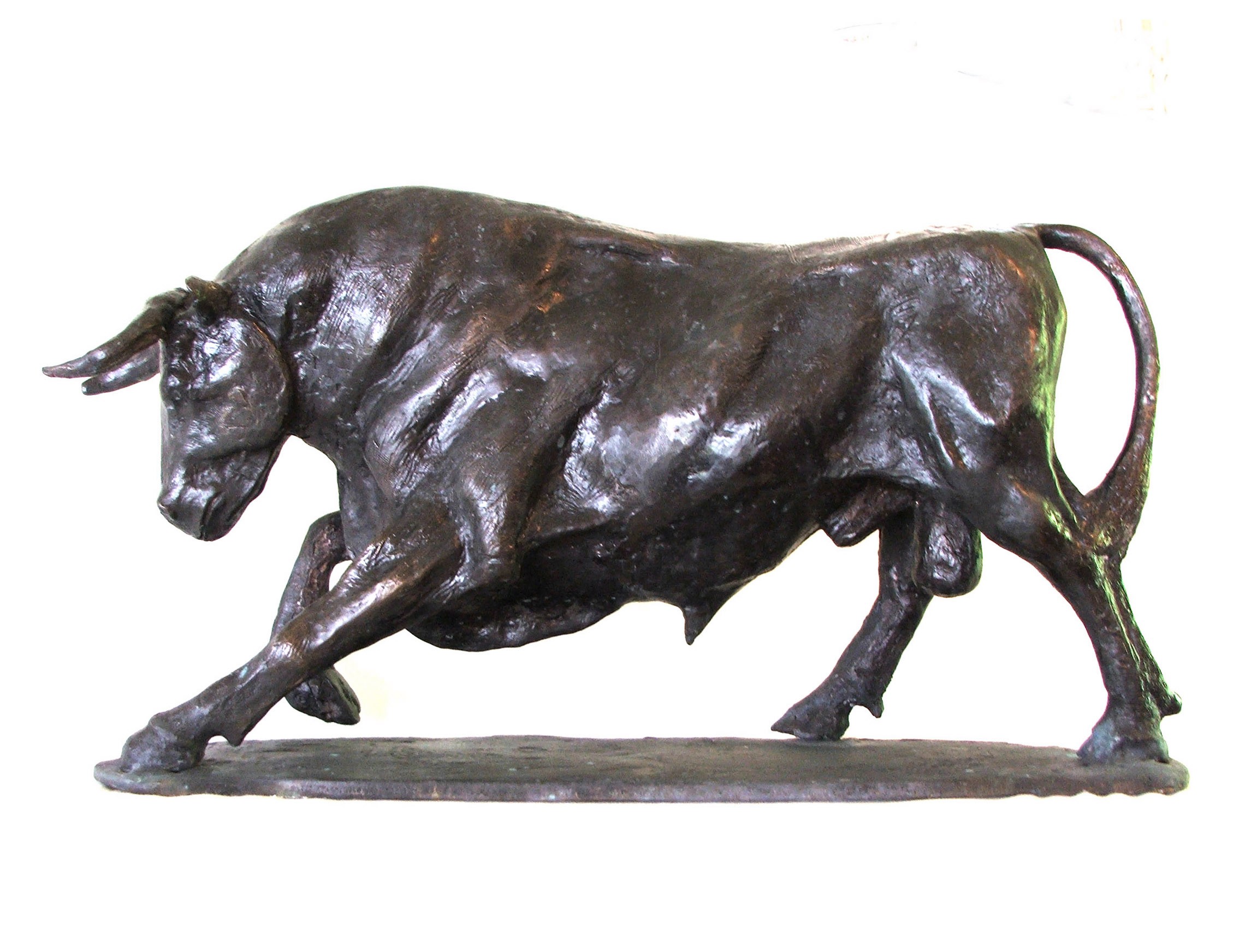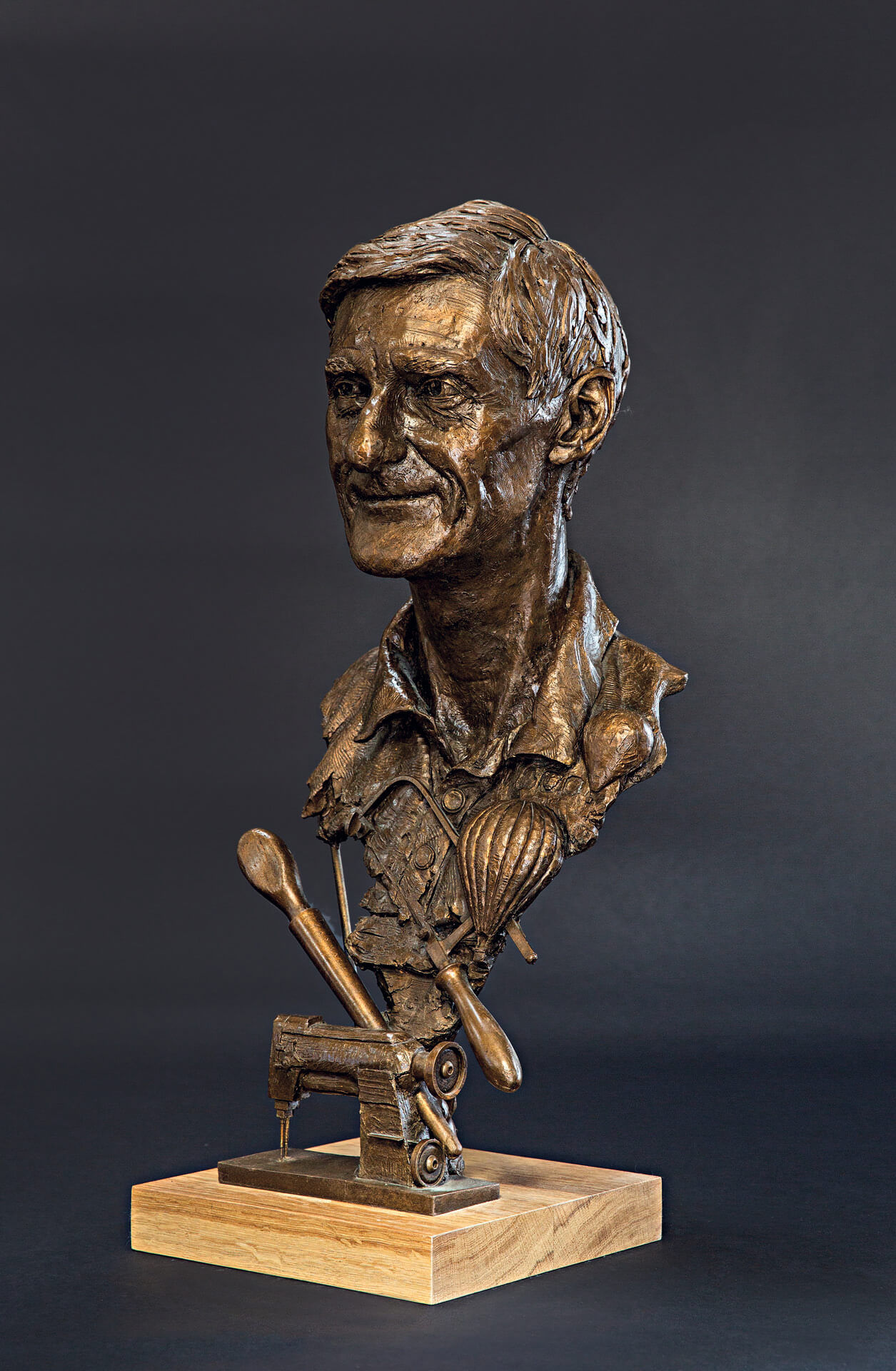Portrait Sculptor: Capturing Essence in Three Dimensions
Wiki Article
The Development of Sculptures: From Ancient to Modern
The Advancement of Sculptures: From Ancient to Modern.Sculpture, among the earliest kinds of art, has been an essential part of human world for millennia (Robert C Hitchcock Sculptor). From the old human beings of Egypt and Greece to the contemporary era, sculptures have evolved, mirroring modifications in artistic strategies, products, and cultural influences. This journey via time traces the growth of sculptures, discovering the changes stylishly, topic, and creative expression
Starting with the old world, sculptures crafted from rock and later on bronze captured the significance of deities, leaders, and daily life. The Renaissance period saw a rebirth of timeless sculpting strategies, as musicians looked for to replicate the stylish forms of old Greek and Roman sculptures. In the contemporary era, artists challenged traditional borders, welcoming abstraction and trial and error with brand-new products.

This exploration will dig right into the varied advancement of sculptures, disclosing the rich tapestry of creative expression throughout different periods and cultures.
Ancient Sculptures: From Stone to Bronze
Old sculptures transitioned from being carved out of rock to being cast in bronze. This change noted a considerable advancement in the art of sculpture, permitting greater refinement and detail in the finished jobs. Stone sculptures, while outstanding in their very own right, were restricted by the nature of the material. Stone required comprehensive forming and carving, typically leading to a more streamlined depiction of the topic.The introduction of bronze as a tool for sculptures brought around a change in imaginative expression. Bronze provided carvers the chance to produce natural and complex forms that were not possible with rock. The procedure of casting bronze enabled the development of multiple copies of a sculpture, enabling broader circulation and preservation of these imaginative masterpieces.
The change from stone to bronze likewise saw a change in the subject of sculptures. While stone sculptures mostly shown gods, goddesses, and mythological numbers, bronze sculptures started to reflect a more comprehensive variety of topics, including everyday individuals and pets. This expansion of subject matter showcased the flexibility and flexibility of the bronze tool.
Renaissance Revival: Sculpting in the Classical Style
The Renaissance rebirth of sculpture experienced a resurgence in the timeless design, structure upon the developments made during the transition from stone to bronze in old sculptures. Throughout this duration, musicians sought to recreate the classic aesthetic and ideals of beauty that prevailed in ancient Greek and Roman sculptures.One of the vital features of the Renaissance resurgence was the emphasis on naturalism and the human kind. Artists like Donatello and Michelangelo aim to capture the physiological information and expressions of their subjects with extraordinary accuracy. They studied the body and included their observations into their sculptures, causing realistic and realistic depictions.
One more essential facet of the Renaissance resurgence was the exploration of viewpoint and depth. Musicians used strategies such as contrapposto, where the weight of the body is moved away, producing a feeling of motion and dynamism. They also trying out different products, consisting of marble and bronze, to accomplish a degree of sophistication and intricacy in their sculptures.
The classical style of the Renaissance resurgence had a profound influence on later durations of art, functioning as a structure for the advancement of Western sculpture. It brought a renewed appreciation for the appeal and grandeur of the human type, and its legacy can still be seen in contemporary sculptures today.
Innovation and the Avant-Garde: Breaking Conventional Borders

Among the key characteristics of modernist sculpture was the focus on abstraction. Artists relocated far from sensible depictions and instead focused on capturing the significance of the topic with simplified forms and geometric shapes. This separation from typical depiction enabled artists to express their feelings and ideas in an extra subjective and individual manner.
Additionally, the progressive motion challenged societal standards and conventions, motivating artists to experiment and press the limits of their art - Contemporary Sculptures. Carvers began including unique materials such as found items, commercial products, and even natural environments into their job. This exploration of brand-new products and methods not only broadened the opportunities for sculpture however also tested the standard notions of what can be thought about art
Contemporary Sculptures: Exploring New Products and Concepts
With a focus on exploring brand-new materials and principles, contemporary sculptures have actually transformed the area of art. Artists today are pushing the limits of traditional sculpture by exploring and utilizing ingenious products with abstract ideas. These sculptures test conventional concepts of materiality, meaning, and type, inviting customers to take part in a new and provocative creative experience.Contemporary artists are embracing a large range of products, including plastic, glass, metal, and also raw material. Contemporary Sculptures. They are not restricted to the traditional medium of stone or clay, permitting better civil liberty and experimentation. This shift in the direction of unusual materials has opened up new possibilities for artists to produce sculptures that are vibrant, interactive, and aesthetically striking
In enhancement to discovering new materials, contemporary sculptures also explore complicated and abstract ideas. Musicians are currently checking out themes such as identification, social problems, and the setting, making use of sculpture as a powerful medium for social commentary and self-questioning. These sculptures challenge audiences to believe critically and engage with art on a deeper level, sparking discussions and prompting psychological feedbacks.
International Impacts: Sculptural Customs From Around The Globe

In ancient Egypt, sculptures were produced mainly for funerary and religious purposes. The renowned sculptures of pharaohs and gods, such as the Great Sphinx and the bust of Queen Nefertiti, display the Egyptians' proficiency of rock sculpting and their belief in the afterlife.
In ancient Greece, sculpture reached learn the facts here now its peak throughout the timeless duration. Influenced by the suitables of consistency, charm, and proportion, Greek sculptures emphasized the human kind and commemorated the accomplishments of gods, athletes, and heroes. The famous sculptures of Aphrodite of Knidos and the Discobolus exemplify the Greeks' search of perfection in sculptural art.
In old Rome, sculpture served both political and artistic functions. Equine Sculptures. Roman sculptures often portrayed emperors, generals, and mythological figures, mirroring the power and splendour of the realm. The marble statuary of Augustus of Prima Porta and the significant Arch of Constantine are remarkable examples of Roman sculptural achievements
Asian sculptural customs, specifically in India, China, and Japan, have also had a profound influence on the evolution of sculptures. Japanese sculptures, influenced by Buddhism, stress simplicity and serenity, seen in the tranquil statuaries of Buddha and the stylish art of bonsai.
The worldwide impacts on sculpture remain to develop in the contemporary period. Musicians today draw motivation from different sculptural practices, incorporating new materials, methods, and concepts to develop innovative and thought-provoking artworks. The combination of various social impacts has actually offered surge to a dynamic and diverse sculptural landscape, reflecting the interconnectedness of our global society. As we want to the future, it is specific that the worldwide influences on sculpture will remain to form and redefine this ancient art kind.
Final Thought
In final thought, the evolution of sculptures has actually seen a shift from ancient rock and bronze works to the classical rebirth throughout the Renaissance. Today, contemporary sculptures discover brand-new materials and principles, while likewise drawing ideas from worldwide sculptural traditions - Robert C Hitchcock Sculptor.From the ancient human beings of Egypt and Greece to the modern-day era, sculptures have progressed, mirroring adjustments in imaginative techniques, materials, and cultural influences.Beginning with the ancient world, sculptures crafted from rock and later on bronze recorded the significance of divine beings, leaders, and everyday life.Old sculptures transitioned from being carved out of rock to being cast in bronze. While rock sculptures predominantly depicted gods, goddesses, and mythological figures, bronze sculptures began to reflect a broader range of subjects, including everyday individuals and pets.In verdict, the advancement of sculptures has actually seen a shift from ancient stone and bronze works to the classic revival throughout the Renaissance.
Report this wiki page